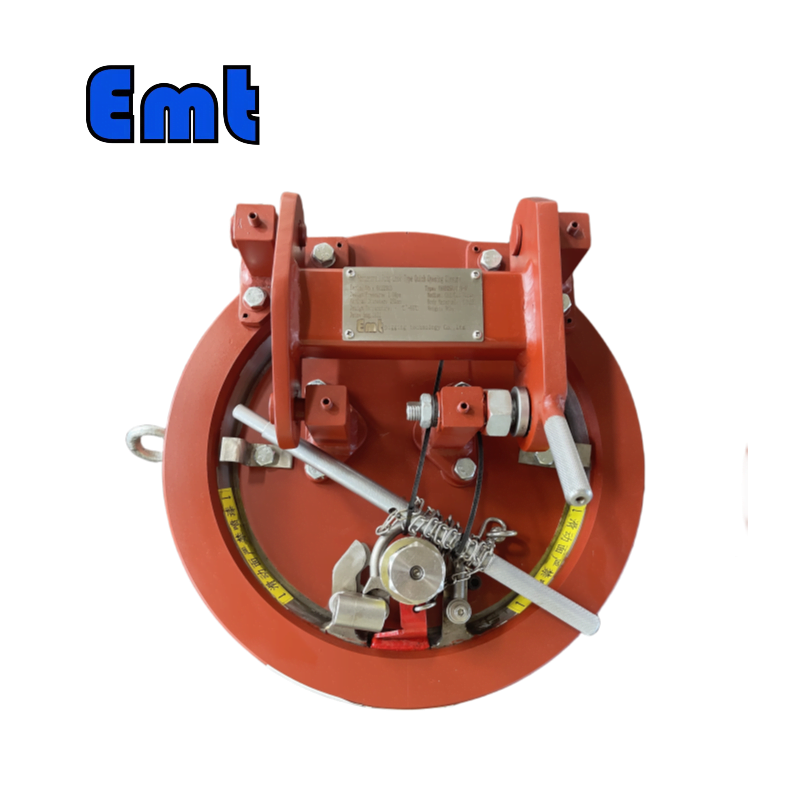Description
Pressure Vessel Closure | ||||
Design Pressure | 1.6MPa-30MPa | |||
Corrosion Allowance | 2mm | |||
Seismic Fortification Intensity | 7 Degrees | |||
Work Medium | Oil, Natural gas, Water and ore pulp, etc. | |||
Opening Time | Within 60s less than 200N | |||
Opening Type | Vertical or Horizontal | |||
Production Feature

3. The safety lock system has a self-locking function.
When the equipment is before the booster, the fast-opening blind and the locking structure on the scheduled operating parts can all lock; if the equipment is not in the reserve lock position, it can not be boosted.
When the equipment is ready before the blind flange cover is opened, it can completely make the container’s inner pressure relief and all realize the secondary pressure relief to avoid safety problems due to wrong operation.
Introduction

Pressure Vessel Closures, the unsung heroes of industrial operations, play an indomitable role in ensuring safety and efficiency. These components are the gatekeepers of pressure vessels, containers designed to hold gases or liquids at pressure levels significantly different from ambient pressure. Each closure type is tailored to a particular range of applications, ensuring a secure seal on the vessel and facilitating easy access when necessary.
Types of Pressure Vessel Closure
Several types of Pressure Vessel Closures exist, each catering to unique operational requirements and industrial contexts. Bolted closures, threaded closures, and quick-opening closures are among the most prevalent types.
Bolted closures, as the name suggests, employ a series of bolts to secure the closure. This option offers a reliable seal, making it suitable for high-pressure applications. However, it can be time-consuming to open and close, particularly on larger vessels.
Threaded closures utilize screw threads for sealing and opening. They provide a secure seal and faster access compared to bolted closures, but they are generally limited to smaller vessels due to the practical limitations of screw threads on larger scales.
Quick opening closures are a more recent innovation. They are designed for rapid opening and closing, making them ideal for situations where frequent access to the interior of the pressure vessel is necessary. Safety and ease of operation are prime attributes of these closures.
Function of Pressure Vessel Closure
Pressure Vessel Closures serve a critical function in industrial environments. Their primary job is to securely seal pressure vessels. They are the guardians that contain the high pressures within these vessels, ensuring the safe containment of gases or liquids.
Simultaneously, closures must also offer accessibility. Access to the vessel’s interior is often required for maintenance, inspection, or other operational needs. Closures, therefore, strike a careful balance between safety and accessibility, ensuring a secure seal when needed, but also allowing efficient access when required.
This dual role makes Pressure Vessel Closures an integral part of industrial operations, contributing significantly to operational safety and efficiency.
Compliance and Standards
Pressure Vessel Closures, like many industrial components, must comply with various industry standards. These benchmarks, such as those set by the American Society of Mechanical Engineers (ASME), ensure that the closures are safe, reliable, and fit for purpose.
These standards dictate various aspects of closure design and manufacture, from material selection to testing protocols. They ensure not only that the closure can withstand the pressures it will be subjected to, but also that it can do so consistently and reliably over its service life.
By adhering to these standards, manufacturers of Pressure Vessel Closures assure that their products will perform safely and effectively under the demanding conditions of industrial operations.
Material Construction
The construction of Pressure Vessel Closures is a study in precision and durability. High-grade metals such as stainless steel, carbon steel, and other alloys are often the materials of choice. These metals offer a combination of strength, durability, and resistance to pressure and corrosion, making them ideal for this application.
The materials used in a closure’s construction must match or exceed the performance characteristics of the pressure vessel itself. After all, the closure must withstand the same pressures and conditions as the vessel it seals.
Material selection, therefore, is a critical aspect of closure design. It directly impacts the performance, durability, and safety of the closure, and by extension, the entire pressure vessel.
Conclusion
In conclusion, Pressure Vessel Closures play a pivotal role in the design and operation of pressure vessels. Their function extends beyond simply opening and closing these vessels. They ensure the safe containment of high pressures, provide necessary access when required, and do so while meeting stringent industry standards.
The careful selection of materials in their construction further underscores the importance of these closures. It ensures they can match the performance and durability of the vessels they seal.
Pressure Vessel Closures, therefore, are not merely components. They are integral to the operation of pressure vessels, contributing significantly to the safety, efficiency, and reliability of numerous industrial applications.





Reviews
There are no reviews yet.